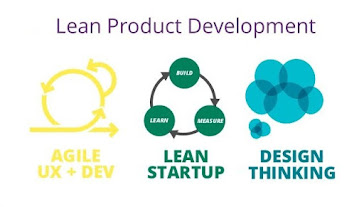- Get link
- X
- Other Apps
- Get link
- X
- Other Apps
Software worth stream mapping and the strength to reflect how workflows through an ever-changing and complex delivery management software system enable crews to survey metrics and give a quick review to see if your system is functioning well or not.
But where do you begin with all of that? Where do you rise improving, where do you spend your time? What do the elite performers have in common? The Accelerate: 2018 State of DevOps report by DevOps Research and Assessment surfaces abilities that are statistically proved to update software delivery performance and are distributed across high accomplishing teams and groups.
""Low performers were double as likely to be developing and delivery software in separate siloed units than elite performers." - Accelerate 2018 State of DevOps report, DevOps Research, and Assessment."

Developing an organization's strength to delivery management system software is inspired by a revolution in how work gets completed within an organization. Agile, Lean and DevOps practices offer a number of management and technical capabilities that influence change in behavior and culture.
These practices have related cultural properties that display up in Ron Westrum's model of organizational cultures. Westrum was a sociologist who discovered that organizational culture was predictive of performance results as properties of a "generative" (performance-oriented) culture. The solution for a generative culture, according to Westrum, is cooperation, surfacing obstacles, breaking down silos, continuous learning, and experimentation to drive growth.
Leading Culture Through Leadership and Autonomy
The State of DevOps report observed when leaders give their units autonomy that leads to faith and a setting where teams feel pleased to voice their views, opinions, anxieties with the aim to perform the best potential outcome.
It's a leader's responsibility to promote autonomy by giving clear aims and results but letting the crew decide how the work gets done, which leads to belief and, in change, a call that confidently affects organizational culture.

Build a Climate for Learning
Learning requires to be core to the organizational culture from how operators can improve their skills and knowledge to how people within the organization learn from users, consumers, and the market, and then work on that knowledge.
Learning and training of workers require to be something that is formally described and all operators should have fair access to these opportunities within the confines of their regular job.
""An organization with an atmosphere for learning is one that observes learning as an investment that is required for the extension as opposed to a required evil, ..." - Accelerate: 2018 State of DevOps report, DevOps Research and Assessment."
In product development, knowledge requires to be provided and encouraged. In software development, we trade with a bunch of change. Change is continuous. Continuous delivery, tiny batch sizes matched with great software delivery performance, allows regular and quick deploys giving organizations the chance to learn often and fast. But these methods are required to match how the organization works. Is it ok to switch plans? How does an organization plan release? How rigid are these ideas? How does an organization respond to turn during software development or as a portion of a release?
Embracing learning and development means reconsidering how we observe alterations in our ideas, and how we work upon it.
Agile and lean product management methods expect turnover and are focused on learning based on recently created data.

Lean Product Management
The Accelerate: 2018 State of DevOps Report discovered that lean product management abilities unmistakably influence software delivery performance, organizational culture, and organizational performance.
Lean product management, DevOps, and CD show how software delivery performance not only affects the strength to deliver software quicker but it allows other functions to transform how the job gets done and select a model of constant feedback and learning.
The statement defines three components of lean product management as:
Products and highlights get sliced into tiny batches that can be achieved in less than a week and delivered regularly.
Organizations actively and constantly explore consumer feedback and include this feedback.
Development teams have the power to build and modify specifications as a component of the development process without needing permission.

Cross-Functional Teams
Cross-functional teams have all competencies required to get the needed work done without depending on others who are not members of the team.
These teams are providing autonomy on how to deliver their work. They are nearby to the consumer, are provided to modify specifications based on feedback from the market, and have the skills and information within their crew to act fast and make well-informed judgments with the wanted consequence and definite purposes in mind.

Continuous Delivery
The CD method is the engine that allows cross-functional teams to deploy and learn fast while maintaining standards and great quality beyond the organization.
The report highlights continuous delivery as a primary practice for prosperous technology transformations. CD involves the utility of version command, deployment automation, continuous integration, trunk-based development, and a loosely coupled architecture.
Software value stream management and visualizing the end-to-end CD method and observing the underlying CD platform is critical for an organization's capability to continuously delivery software. In this world where we require to run and learn quickly, where we have more and more changing pieces and a developing complex software system, we require to be capable to fully understand the end-to-end delivery system and how and where to develop upon it.
High accomplishing software delivery allows lean and agile methods of continuous learning and continuous enhancement to moving quickly in the right place.
Comments
Post a Comment